BMW X1 vs SEAT Leon – Which model is better for everyday use?
Two cars, one duel: BMW X1 meets SEAT Leon.
Which one wins in performance, efficiency and value for money? Find out now!
Costs and Efficiency: Price and efficiency are key factors when choosing a car – and this is often where the real differences emerge.
SEAT Leon has a decisively advantage in terms of price – it starts at 24500 £, while the BMW X1 costs 38200 £. That’s a price difference of around 13774 £.
Fuel consumption also shows a difference: SEAT Leon manages with 0.30 L and is therefore decisively more efficient than the BMW X1 with 0.80 L. The difference is about 0.50 L per 100 km.
As for range, the SEAT Leon performs noticeable better – achieving up to 134 km, about 51 km more than the BMW X1.
Engine and Performance: Power, torque and acceleration say a lot about how a car feels on the road. This is where you see which model delivers more driving dynamics.
When it comes to engine power, the BMW X1 has a slightly edge – offering 326 HP compared to 272 HP. That’s roughly 54 HP more horsepower.
In acceleration from 0 to 100 km/h, the BMW X1 is decisively quicker – completing the sprint in 5.40 s, while the SEAT Leon takes 7.70 s. That’s about 2.30 s faster.
In terms of top speed, the BMW X1 performs a bit better – reaching 250 km/h, while the SEAT Leon tops out at 220 km/h. The difference is around 30 km/h.
There’s also a difference in torque: BMW X1 pulls clearly perceptible stronger with 477 Nm compared to 360 Nm. That’s about 117 Nm difference.
Space and Everyday Use: Cabin size, boot volume and payload all play a role in everyday practicality. Here, comfort and flexibility make the difference.
Both vehicles offer seating for 5 people.
In curb weight, SEAT Leon is somewhat lighter – 1344 kg compared to 1575 kg. The difference is around 231 kg.
In terms of boot space, the BMW X1 offers noticeable more room – 540 L compared to 380 L. That’s a difference of about 160 L.
In maximum load capacity, the BMW X1 performs to a small extent better – up to 1600 L, which is about 299 L more than the SEAT Leon.
When it comes to payload, SEAT Leon slight takes the win – 521 kg compared to 500 kg. That’s a difference of about 21 kg.
Who wins the race?
The SEAT Leon proves to be dominates this comparison and therefore becomes our DriveDuel Champion!
SEAT Leon is the better all-rounder in this comparison.
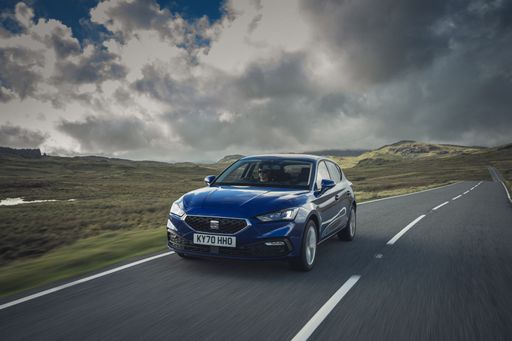
SEAT Leon
BMW X1
The new BMW X1 effortlessly blends sporty elegance with practical functionality, making it a standout choice in the compact SUV segment. Inside, the sophisticated cabin design is complemented by high-quality materials and cutting-edge technology, creating a welcoming and advanced driving environment. On the road, the vehicle's agile handling and responsive performance promise an engaging driving experience, whether navigating urban streets or embarking on longer journeys.
details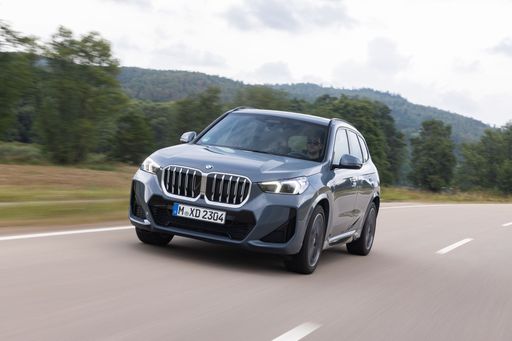 @ press.bmwgroup.com
@ press.bmwgroup.com
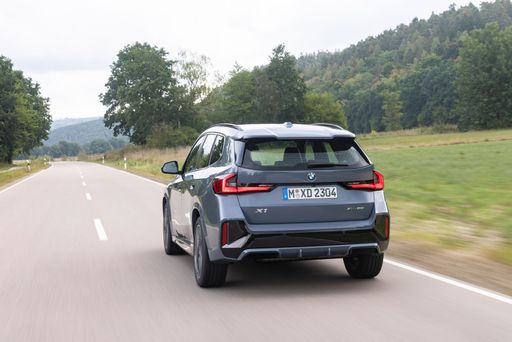 @ press.bmwgroup.com
@ press.bmwgroup.com
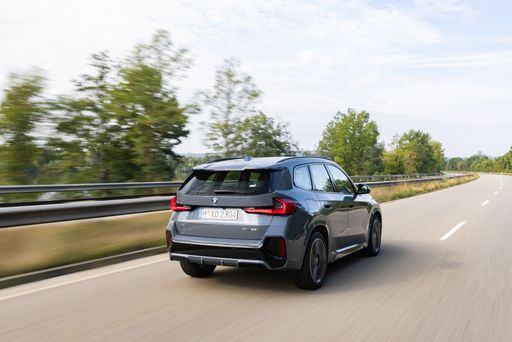 @ press.bmwgroup.com
@ press.bmwgroup.com
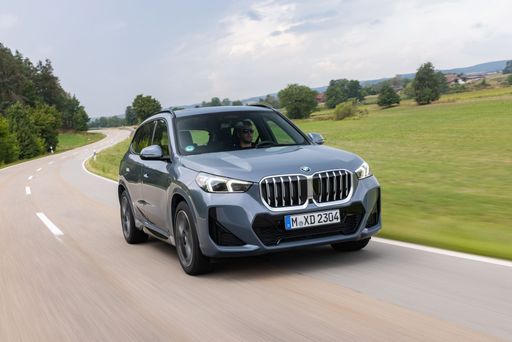 @ press.bmwgroup.com
@ press.bmwgroup.com
 @ press.bmwgroup.com
@ press.bmwgroup.com
SEAT Leon
The SEAT Leon impresses with its dynamic design and sporty edge, making it a standout choice in its class. Its interior is characterised by a modern, driver-focused cockpit that combines functionality with an emphasis on comfort. The car delivers a responsive driving experience, thanks to its advanced engineering and agile handling capabilities.
details @ seatmedia
@ seatmedia
 @ seatmedia
@ seatmedia
 @ seatmedia
@ seatmedia
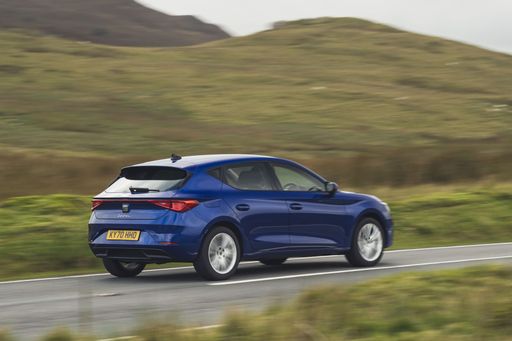 @ seatmedia
@ seatmedia

|

|
|
|
|
Costs and Consumption |
|
|---|---|
|
Price
38200 - 55500 £
|
Price
24500 - 36400 £
|
|
Consumption L/100km
0.8 - 7.7 L
|
Consumption L/100km
0.3 - 5.7 L
|
|
Consumption kWh/100km
-
|
Consumption kWh/100km
-
|
|
Electric Range
83 km
|
Electric Range
133 - 134 km
|
|
Battery Capacity
14.20 kWh
|
Battery Capacity
19.70 kWh
|
|
co2
17 - 175 g/km
|
co2
7 - 129 g/km
|
|
Fuel tank capacity
47 - 54 L
|
Fuel tank capacity
40 - 45 L
|
Dimensions and Body |
|
|---|---|
|
Body Type
SUV
|
Body Type
Hatchback
|
|
Seats
5
|
Seats
5
|
|
Doors
5
|
Doors
5
|
|
Curb weight
1575 - 1935 kg
|
Curb weight
1344 - 1670 kg
|
|
Trunk capacity
490 - 540 L
|
Trunk capacity
270 - 380 L
|
|
Length
4500 - 4505 mm
|
Length
4368 mm
|
|
Width
1845 mm
|
Width
1799 mm
|
|
Height
1622 - 1642 mm
|
Height
1442 - 1460 mm
|
|
Max trunk capacity
1495 - 1600 L
|
Max trunk capacity
1187 - 1301 L
|
|
Payload
490 - 500 kg
|
Payload
460 - 521 kg
|
Engine and Performance |
|
|---|---|
|
Engine Type
Diesel MHEV, Petrol MHEV, Plugin Hybrid, Petrol, Diesel
|
Engine Type
Petrol, Petrol MHEV, Diesel, Plugin Hybrid
|
|
Transmission
Automatic
|
Transmission
Manuel, Automatic
|
|
Transmission Detail
Dual-Clutch Automatic
|
Transmission Detail
Manual Gearbox, Dual-Clutch Automatic
|
|
Drive Type
Front-Wheel Drive, All-Wheel Drive
|
Drive Type
Front-Wheel Drive
|
|
Power HP
136 - 326 HP
|
Power HP
110 - 272 HP
|
|
Acceleration 0-100km/h
5.4 - 9.2 s
|
Acceleration 0-100km/h
7.7 - 10.5 s
|
|
Max Speed
190 - 250 km/h
|
Max Speed
197 - 220 km/h
|
|
Torque
230 - 477 Nm
|
Torque
220 - 360 Nm
|
|
Number of Cylinders
3 - 4
|
Number of Cylinders
4
|
|
Power kW
100 - 240 kW
|
Power kW
85 - 200 kW
|
|
Engine capacity
1499 - 1998 cm3
|
Engine capacity
1498 - 1968 cm3
|
General |
|
|---|---|
|
Model Year
2023 - 2025
|
Model Year
2024 - 2025
|
|
CO2 Efficiency Class
D, E, B, F
|
CO2 Efficiency Class
D, B
|
|
Brand
BMW
|
Brand
SEAT
|
Is the BMW X1 offered with different drivetrains?
The BMW X1 is offered with Front-Wheel Drive or All-Wheel Drive.
The prices and data displayed are estimates based on German list prices and may vary by country. This information is not legally binding.
